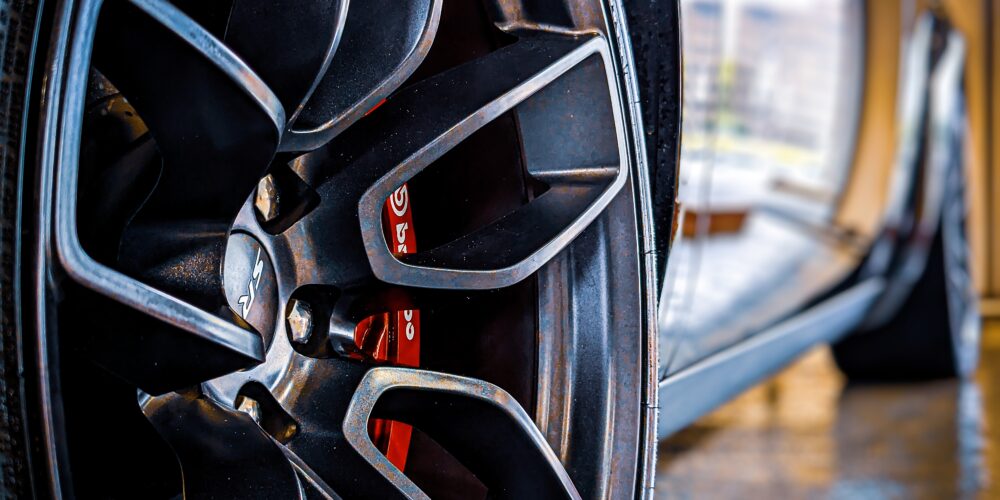The brake pads in your vehicle are undoubtedly one of the most crucial parts of the entire driving process, offering you safe and comfortable braking as well as improving safety on the roads overall. However, if you don’t understand much about what brake pads are, how to care for them or what you need to look out for in a brake pad, we are on hand to help. As well as offering replacement or repair at our garages across the UK, we have also put together this guide to help you better understand what brake pads are, why they’re important and what the difference is between different types.
What Are Brake Pads?
Brake pads are part of the overall braking system – consisting of the pads, a brake disc and a brake calliper for each wheel. The pads are often made of friction material and are fitted onto the calliper, sitting just off of the brake disc itself. These pads make braking smoother and more efficient by offering friction when the callipers extend and clap the pads against the rotor. They offer a consistent level of friction regardless of temperature, maintaining their performance in every weather, whether wet, dry, icy or somewhere in between. However, while an ideal brake pad will be effective, quiet and useable in every situation, this just isn’t the case, which is why there are different brake pads for different situations that could suit your vehicle best, or suit your personal preferences.
What Types Of Brake Pads Are There?
The range of brake pads out there is vast and can often be confusing to navigate if you aren’t sure where to start. Some of the key brake pads available on the market include:
- Non-metallic (Organic) -This is the softest form of brake pad, usually created with a combination of glass, rubber and reins such as cellulose. They wear faster than other types but are much easier on the brake discs.
- Semi-Metallic – These are the most commonly found in cars sold, using a combination of both synthetic materials and metals, offering a predominantly metallic compound that is resistant to heat and wear, lasts longer than organic alternatives, but may need more pedal force for the same braking effect.
- Ceramic – Usually only pre-installed on luxury supercars due to their cost, ceramic brake pads are a high-cost but high-quality option for the vehicle. This ceramic compound is exceptional at absorbing heat and can usually quickly and continuously recover from heavy demand, even in racing, heavy braking and more.
How Long Will Brake Pads Last?
The length of time that your brake pads last will ultimately depend on how and where you drive your vehicle, the brake pads you have and even the weight of your car. Some of the key factors that can affect the longevity of your brake pads include:
- Brake Pad Type – Organic brake pads tend to wear far quicker than any other type, with low and semi-metallic options generally having longer life expectancies. Ceramics are the longest-lasting of them all.
- Mileage – The more you drive, the faster the brakes will wear down, though this can also depend on where you’re driving and the types of roads that you’re driving on.
- Where you drive – If you’re typically travelling long distances with minimal braking, such as on motorways, your brake pads are likely to last longer. On the other hand, city driving is likely to wear them out faster due to the constant stop-start of traffic and traffic lights.
When Do I Need To Replace Them?
When it comes to knowing what your vehicle needs and when warning lights and sensors are becoming more and more intelligent. However, there are more methods than just a light on the dashboard that can help you determine whether your brake pads are in need of replacement. These include:
- Warning lights – brake pad warning lights come on when the wear is getting to a dangerous point, indicating that you need to have them replaced soon.
- Visual checks – You can see visually whether your brake pads are in need of replacement, however, this can depend on the vehicle that you have. Check through the spokes on your wheels – can you see at least 3mm of the pad? If not, you should get the pads replaced as soon as possible.
- Screeching – Without the pads there to act as a buffer, your brake disc and the casing are likely to be scraping against each other and at this point, it’s crucial to have them checked and replaced as soon as possible.
- The car pulls to one side – If you feel that your car is pulling one way or another when you’re braking, it could be that there is an issue with one or more of your brake pads. Getting them all checked for wear is crucial.
If you think your brake pads could be on the brink of needing replacement or are already in need, we are on hand to help. Our team at Service4Service offer vehicle repairs and maintenance to ensure your vehicle remains in the best condition possible for longer. You can book your car in with our team by contacting us here online or giving us a call at 0808 164 0418.

